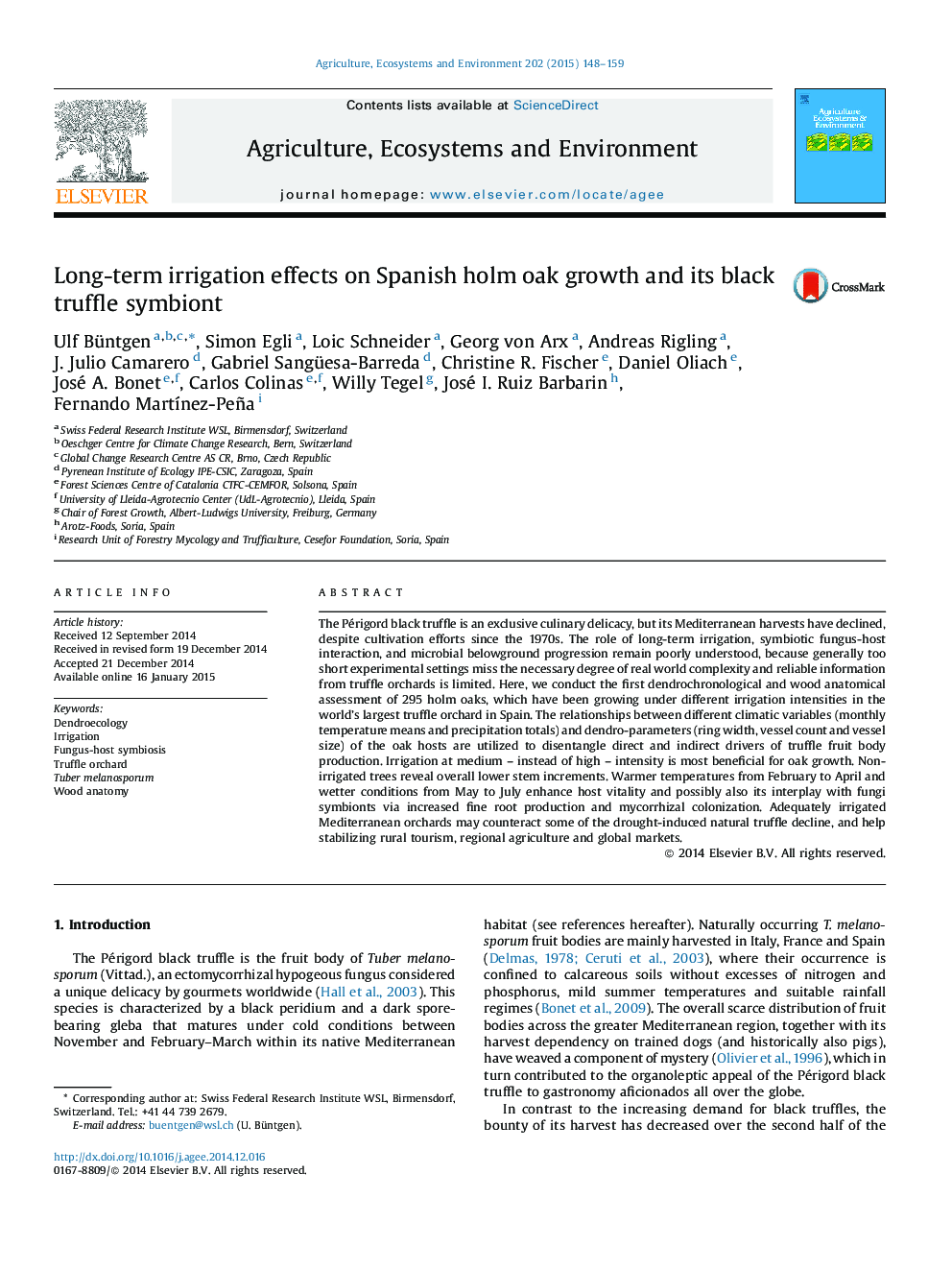| Article ID | Journal | Published Year | Pages | File Type |
|---|---|---|---|---|
| 2413773 | Agriculture, Ecosystems & Environment | 2015 | 12 Pages |
•Périgord truffle harvest declines in drought-prone Mediterranean habitats.•Irrigation at medium intensity is most beneficial for oak and truffle growth.•Warmer spring and wetter summer conditions enhance the truffle-host symbiosis.•Adequately irrigated truffle orchards may counteract falling natural truffle yields.•Truffle production stabilizes rural tourism, regional agriculture and global markets
The Périgord black truffle is an exclusive culinary delicacy, but its Mediterranean harvests have declined, despite cultivation efforts since the 1970s. The role of long-term irrigation, symbiotic fungus-host interaction, and microbial belowground progression remain poorly understood, because generally too short experimental settings miss the necessary degree of real world complexity and reliable information from truffle orchards is limited. Here, we conduct the first dendrochronological and wood anatomical assessment of 295 holm oaks, which have been growing under different irrigation intensities in the world’s largest truffle orchard in Spain. The relationships between different climatic variables (monthly temperature means and precipitation totals) and dendro-parameters (ring width, vessel count and vessel size) of the oak hosts are utilized to disentangle direct and indirect drivers of truffle fruit body production. Irrigation at medium – instead of high – intensity is most beneficial for oak growth. Non-irrigated trees reveal overall lower stem increments. Warmer temperatures from February to April and wetter conditions from May to July enhance host vitality and possibly also its interplay with fungi symbionts via increased fine root production and mycorrhizal colonization. Adequately irrigated Mediterranean orchards may counteract some of the drought-induced natural truffle decline, and help stabilizing rural tourism, regional agriculture and global markets.
